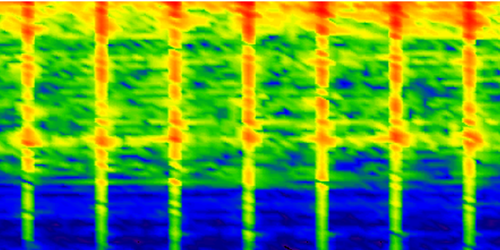Generating Harmonic Signals in Correlated Electron Systems
Expose some materials to an intense laser, and they will emit light with a frequency greater than that of the laser—a phenomenon called high harmonic generation (HHG). Researchers have mostly studied HHG in dielectric or semiconducting gases and solids. HHG is also seen in more correlated electron systems, but its occurrence here is poorly understood. Now Sumio Ishihara of Tohoku University in Japan and colleagues describe a mechanism by which a correlated electron system can generate a high harmonic optical signal. The finding could help researchers better utilize HHG for applications such as producing ultrashort—attosecond—laser pulses.
Current models of HHG in solids assume that there is just one electron moving about in the solid. This picture was sufficient to explain the phenomenon in dielectric materials or semiconducting materials, such as silicon. But these models don’t work for more correlated electron systems, where interactions between electrons need to be accounted for. Using a 1D computer model, Ishihara and colleagues account for these interactions, showing that they can lead to the generation of high harmonic signals. And they show that these systems can generate harmonic signals up to about 120 times the frequency of the input laser.
Ishihara says that his group plans to extend their 1D model to higher dimensions. He also plans to study ways to make correlated materials generate harmonic signals with even greater frequencies and intensities than those predicted in their current model.
This research is published in Physical Review Letters.
–Erika K. Carlson
Erika K. Carlson is a Corresponding Editor for Physics based in Brooklyn, New York.




